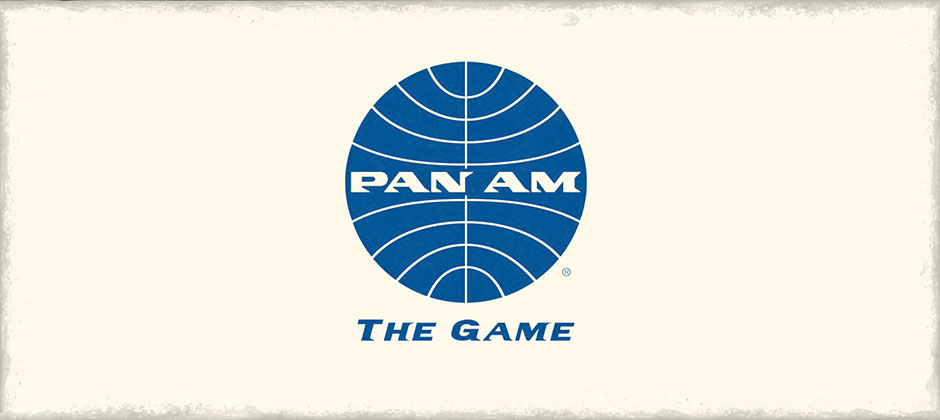
Looks like I picked the wrong week to quit drinking.
Fasten your seatbelts and explore the golden age of air travel with your Pan Am rules summary and reference!
Designed by studio Prospero Hall and published by Funko Games, Pan Am is a beautiful game. Funko sent me a copy along with Godzilla: Tokyo Clash and Back to the Future: Back in Time, and all three are jewels of game design; not only obviously created with much care and attention to detail, but in an time of game production characterised by excess and expense, packed into smaller boxes and sold at incredible reasonable price points.
When I first hear about Pan Am I assumed it would be a slightly more complicated Ticket to Ride, and was very pleased to discover it is so much more. Yes, you are claiming routes on a map, but there the similarity ends: Pan Am is far more interesting and involving. Firstly, there are a variety of ways to claim routes, and the focus is getting landing rights at the locations between them by building airports or holding the right destination cards (or discarding cards to get one-off rights). Secondly, you don’t just grab routes and score points; you’re claiming routes with the goal of selling them to Pan Am for stock, whose network expands over the board every round, so picking the right routes to claim and then selling them at the right time are just some of the many interesting strategies.
Pan Am features a clever system of placing your engineers to reserve action spaces in one phase, followed by a phase in which those actions are executed. Since some of those spaces have bidding tracks, you’ll also have to decide how much you’re willing to spend to avoid being outbid by other players to grab that action, and choose the order in which you place your engineers carefully. Pan Am’s stock price fluctuates during the game, so choosing when to buy stock is a crucial decision. A deck of directive cards introduces just the right amount of chaos. There are so many wonderful interlocking decision points in the game, and it surprises you by revealing itself as much more complex and intriguing than you first expected.
Operating in beautiful harmony with the game mechanics is the stunning graphic design. From the perfect typography to the gorgeous colour choices, from the subtle ‘wear’ on the game box to the little lines on the wingtips of the plane models that remind you the length of the route they can claim, everything here is carefully and sensitively designed not only to immerse you in the theme, but to make the game easier and more fun to play. The destination cards are perfect little replicas of golden age travel posters, the stock cards look real, and the design of the cards and player mats pulls off that incredibly difficult trick of making simple, minimalist design look elegant and professional. And they even give you blue plastic component trays (‘hangars’) in which you store the four different plane models (oh, why don’t more games give you component trays?). This is without doubt one of the best graphic design work I’ve seen in a boardgame for quite some time.